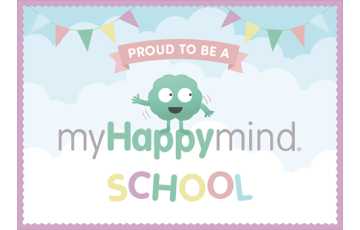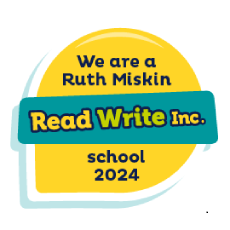Art/DT

Subject Co-ordinator: Miss Curry
Intentions of the Arts
At Elton Primary School we firmly believe that the arts embody some of the highest forms of human creativity and it is therefore our intention to ensure that our curriculum empowers our pupils to be able to express themselves confidently and creatively through high-quality and enriching opportunities. The opportunities within our arts curriculum will develop children’s critical abilities, as well as developing respect and empathy for the world around us through exploring their understanding of their own and others’ cultural heritage as they study a range of diverse artists and composers. It is our intention that our arts curriculum will allow our students to develop a mixture of both independence and teamwork skills through offering opportunities for them to work individually as composers, designers, and artists and also as part of a team undertaking larger DT projects or composing music in small groups or classes as examples. When developing skills such as composition and design, the children will gain key skills which can be continued and developed throughout their lives. At the centre of our arts curriculum, we endeavour to ensure our lessons are creative, engaging and challenging, helping also to broaden the children’s awareness of the wider world and creating a sense of purpose and pride in their work.
‘The arts are like your backbone. You may be
able to survive without your backbone but
what quality of life would you have?’
Sir Simon Rattle
Art and design programmes of study: key stages 1 and 2
Purpose of study
Art, craft and design embody some of the highest forms of human creativity. A high-quality art and design education should engage, inspire and challenge pupils, equipping them with the knowledge and skills to experiment, invent and create their own works of art, craft and design. As pupils progress, they should be able to think critically and develop a more rigorous understanding of art and design. They should also know how art and design both reflect and shape our history, and contribute to the culture, creativity and wealth of our nation.
Aims
The national curriculum for art and design aims to ensure that all pupils:
produce creative work, exploring their ideas and recording their experiences
become proficient in drawing, painting, sculpture and other art, craft and design techniques
evaluate and analyse creative works using the language of art, craft and design
know about great artists, craft makers and designers, and understand the historical and cultural development of their art forms.
Subject content
Key stage 1
Pupils should be taught:
to use a range of materials creatively to design and make products
to use drawing, painting and sculpture to develop and share their ideas, experiences and imagination
to develop a wide range of art and design techniques in using colour, pattern, texture, line, shape, form and space
about the work of a range of artists, craft makers and designers, describing the differences and similarities between different practices and disciplines, and making links to their own work.
Key stage 2
Pupils should be taught to:
develop their techniques, including their control and their use of materials, with creativity, experimentation and an increasing awareness of different kinds of art, craft and design
create sketch books to record their observations and use them to review and revisit ideas
to improve their mastery of art and design techniques, including drawing, painting and sculpture with a range of materials [for example, pencil, charcoal, paint, clay]
about great artists, architects and designers in history.
Design and technology programmes of study: key stages 1 and 2
Purpose of study
Design and technology is an inspiring, rigorous and practical subject. Using creativity and imagination, pupils design and make products that solve real and relevant problems within a variety of contexts, considering their own and others’ needs, wants and values. They acquire a broad range of subject knowledge and draw on disciplines such as mathematics, science, engineering, computing and art. Pupils learn how to take risks, becoming resourceful, innovative, enterprising and capable citizens. Through the evaluation of past and present design and technology, they develop a critical understanding of its impact on daily life and the wider world. High-quality design and technology education makes an essential contribution to the creativity, culture, wealth and well-being of the nation.
Aims
The national curriculum for design and technology aims to ensure that all pupils:
develop the creative, technical and practical expertise needed to perform everyday tasks confidently and to participate successfully in an increasingly technological world
build and apply a repertoire of knowledge, understanding and skills in order to design and make high-quality prototypes and products for a wide range of users
critique, evaluate and test their ideas and products and the work of others
understand and apply the principles of nutrition and learn how to cook
Subject content
Key stage 1
Through a variety of creative and practical activities, pupils should be taught the knowledge, understanding and skills needed to engage in an iterative process of designing and making. They should work in a range of relevant contexts [for example, the home and school, gardens and playgrounds, the local community, industry and the wider environment].
When designing and making, pupils should be taught to:
Design
design purposeful, functional, appealing products for themselves and other users based on design criteria
generate, develop, model and communicate their ideas through talking, drawing, templates, mock-ups and, where appropriate, information and communication technology
Make
select from and use a range of tools and equipment to perform practical tasks [for example, cutting, shaping, joining and finishing]
select from and use a wide range of materials and components, including construction materials, textiles and ingredients, according to their characteristics
Evaluate
explore and evaluate a range of existing products
evaluate their ideas and products against design criteria
Technical knowledge
build structures, exploring how they can be made stronger, stiffer and more stable
explore and use mechanisms [for example, levers, sliders, wheels and axles], in their products.
Key stage 2
Through a variety of creative and practical activities, pupils should be taught the knowledge, understanding and skills needed to engage in an iterative process of designing and making. They should work in a range of relevant contexts [for example, the home, school, leisure, culture, enterprise, industry and the wider environment].
When designing and making, pupils should be taught to:
Design
use research and develop design criteria to inform the design of innovative, functional, appealing products that are fit for purpose, aimed at particular individuals or groups
generate, develop, model and communicate their ideas through discussion, annotated sketches, cross-sectional and exploded diagrams, prototypes, pattern pieces and computer-aided design
Make
select from and use a wider range of tools and equipment to perform practical tasks [for example, cutting, shaping, joining and finishing], accurately
select from and use a wider range of materials and components, including construction materials, textiles and ingredients, according to their functional properties and aesthetic qualities
Evaluate
investigate and analyse a range of existing products
evaluate their ideas and products against their own design criteria and consider the views of others to improve their work
understand how key events and individuals in design and technology have helped shape the world
Technical knowledge
apply their understanding of how to strengthen, stiffen and reinforce more complex structures understand and use mechanical systems in their products [for example, gears, pulleys, cams, levers and linkages]
understand and use electrical systems in their products [for example, series circuits incorporating switches, bulbs, buzzers and motors]
apply their understanding of computing to program, monitor and control their products
Cooking and nutrition
As part of their work with food, pupils should be taught how to cook and apply the principles of nutrition and healthy eating. Instilling a love of cooking in pupils will also open a door to one of the great expressions of human creativity. Learning how to cook is a crucial life skill that enables pupils to feed themselves and others affordably and well, now and in later life.
Pupils should be taught to:
Key stage 1
use the basic principles of a healthy and varied diet to prepare dishes
understand where food comes from.
Key stage 2
understand and apply the principles of a healthy and varied diet
prepare and cook a variety of predominantly savoury dishes using a range of cooking techniques
understand seasonality, and know where and how a variety of ingredients are grown, reared, caught and processed.






